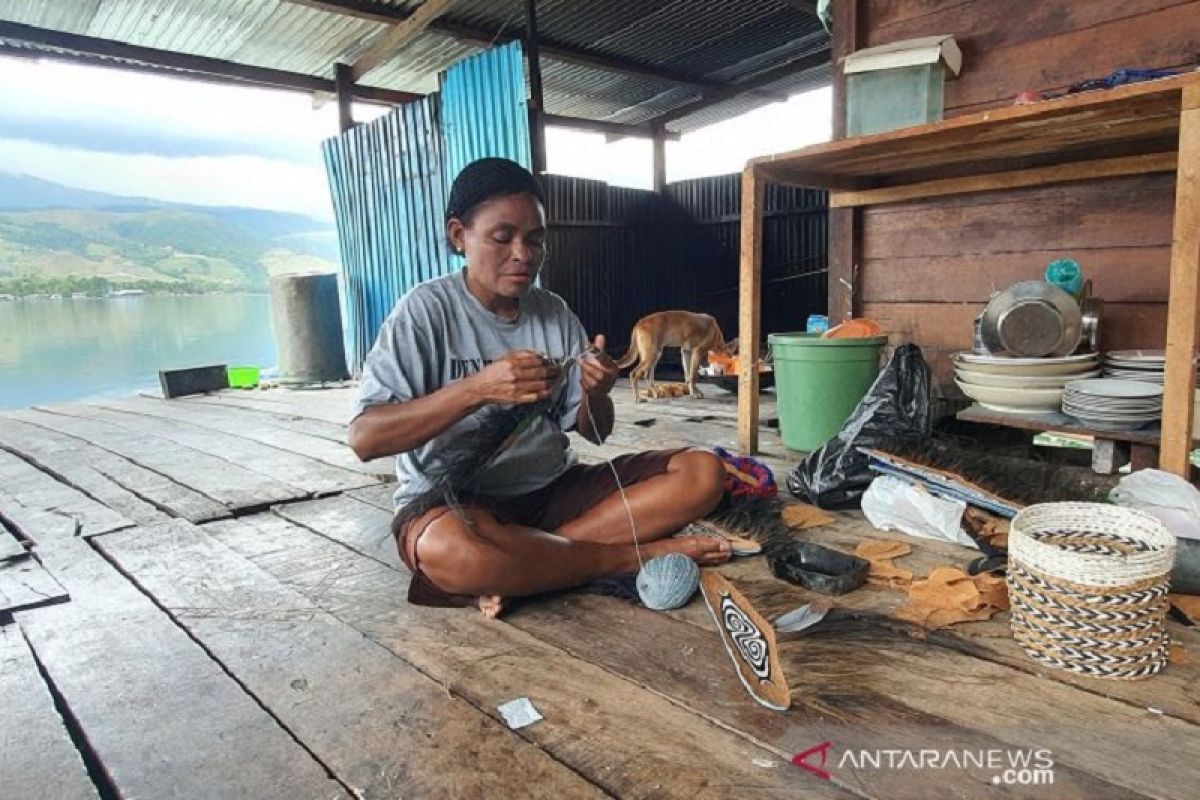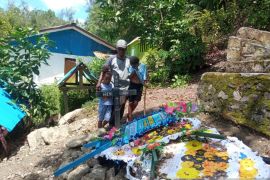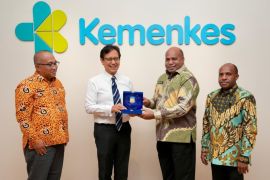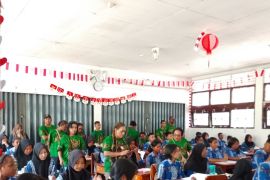I can make 20 headbands a day at most, but lately, I had trouble selling all of my crafts due to the pandemicJakarta (ANTARA) - One of the typical Papuan handicrafts made from bark that still relies heavily on traditional manufacturing techniques remains popular among visitors.
ANTARA seized the opportunity to see firsthand the center of production of tree bark crafts in Papua, precisely in Asei Village, which is a tourist village as well as a home for the province's bark craftsmen. It is located near Lake Sentani.
ANTARA also traveled to see the daily activities of local people in Asei Village.
Bark craft is one of the mainstay livelihoods in Asei Village. From an early age, children in this traditional village are required to learn the skills of making handmade crafts.
"Since I was small, I have been doing this. Since the days of our ancestors, I have been doing this bark craft every day. Starting from making earrings, and now, I am skillful in making all kinds of crafts," Maryones Onge, 46, an indigenous Papuan living in Asei Village, stated.
During the 20th National Sports Week (PON) in Papua being held on October 2-15, people from Asei Village flocked to the city to participate in celebrating the Indonesian quadrennial sports event being held.
Related news: Akhokoy, life lessons learnt through dance form of Yokiwa Village
They have peddled their artistic craft products to be chosen as souvenirs for tourists and contingents of athletes and officials from outside Papua Province that were competing in the Papua PON event.
Onge also made the most of the PON event to sell her handicrafts.
On a daily basis, Onge can produce scores of crafts ranging from headbands and leather bags to traditional tassels.
"I can make 20 headbands a day at most, but lately, I had trouble selling all of my crafts due to the pandemic," she affirmed.
According to Onge, under normal conditions, Asei Village was usually thronged by visitors keen on travelling and looking for original souvenirs made by indigenous Papuans.
However, since the COVID-19 pandemic hit, it has become increasingly difficult to sell local handicrafts and tourism activities in the village have come to a halt.
"Usually, white boats bring foreign tourists here. Once in three to six months. Those tourists usually buy headbands and other bark crafts that we make. However, since the coronavirus disease outbreak, we have tried hard as best as we could to provide for our daily needs," Onge remarked.
Related news: Daily MSME transaction value at Merauke reaches Rp82 mln
PON as revival
To this end, implementation of the PON Games in Papua is viewed as one of the steps to revive the local economy hit by the COVID-19 pandemic.
Onge admitted to being pleased to be actively involved in enlivening the first PON held in the easternmost region of Indonesia.
Onge noted that within three weeks before the PON took place, her family participated in making hundreds of orders for crafted headbands to complement the clothes of dancers, who would perform at the grand opening of the national event.
Related news: PON continues with stricter health protocols after COVID cases emerge

Related news: Taking a peek at cenderawasih in its natural habitat
Through her handicrafts, Onge is keen to showcase the unlimited creativity of the indigenous Papuan people while still upholding their cultural values.
The native Papuan woman expressed hope that each of her handcrafts would bring happiness and peace to the users.
Onge also views the PON Papua as an event to showcase the true colors of a safe, peaceful, and humble Papua.
The peace that is now being maintained by the community during the Papua PON is also expected to be sustainable.
Apart from Onge, ANTARA also had the opportunity to meet a 42-year-old bark decoration painter Jefry Nere, who is active in making Papuan paintings on bark.
Jefry expressed his happiness, as the bark craft from Asei Village turned out to be a favorite among visitors to serve as souvenirs to recall a memory of the 20th PON and Papua.
Every day, Jefry diligently makes paintings of symbols that serve as reminders of the events and the beauty of Papua and its people.
When ANTARA met Jefry, he was painting the picture of Cenderawasih, or the bird of paradise, which is a rare animal only found in Indonesia's Papua, Papua New Guinea, Torres strait islands, and eastern Australia.
Related news: Port Numbay batik carries message of peace from Papuan mothers
Jefry admitted to being glad to be part of the implementation of the first PON in Papua through his painting crafts.
"There are several orders for my crafts. We can again run the local economy that has been disrupted by the coronavirus disease outbreak. I am happy that tourism has also opened again," he remarked.
Onge and Jefry are two of the numerous Papuans that are pinning high hopes on the implementation of the Papua PON being an opportunity for the people of the archipelago to gain a broader understanding about humanity and the beauty of Papua.
"We ... the Papuans ... do really hope that this PON event can be held safely and peacefully till the end, so that all good things can be told and everyone can know the best about the Land of Papua," Onge emphasized.
Related news: VP Amin visits XVIII Kasuari Regional Military Command Complex
Related news: West Java retains title of champion of XX Papua PON
Editor: Fardah Assegaf
Copyright © ANTARA 2021












